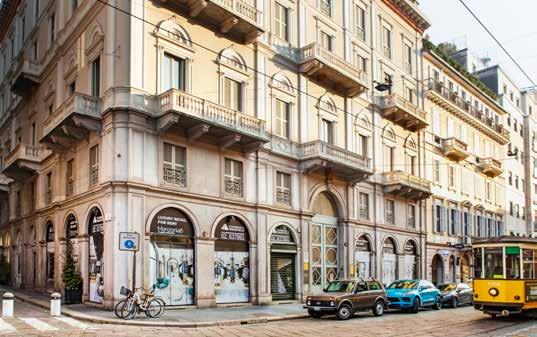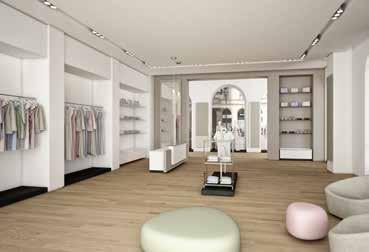
3 minute read
International Partner Head of Retail Italy Cushman & Wakefield
Thomas Casolo International Partner Head of Retail Italy Cushman & Wakefield
the centrality of the Point of sale grows in synergy with the online market
Advertisement
It is yet to be seen whether, and how, the problems of the international geo-political scenario will affect commercial real estate. At the moment, there is no evidence of any slowdown in interest from companies and investors. Also with regard to the effects of high energy prices on shop operating costs, we currently have no requests to renegotiate contracts. Instead, due to the health emergency, for the last couple of years the clientele in Italy has been almost exclusively European and store turnovers remain lower than the pre-Covid figures: the possibility of growth is evidently linked to the recovery of tourism, in particular, from America and the Far East. Luxury brands continue to work towards a return to normality with openings and repositioning, operating in Milan and the most important cities for tourist flows. In the mass market, retailers are reviewing and selecting their network between city centres and shopping centres. That said, the pandemic has undoubtedly changed the retail paradigms and brands have had to adapt, first of all by evolving in omnichanneling terms to ensure an effective interaction between real and virtual. The in-store shopping experience has become essential, as has ensuring a new way of shopping online. Consequently, everyone has had to equip themselves with a distribution platform – it is no coincidence that logistics has really exploded in this period -, implement warehouses and warehousing, and
«in sh an Omnichannel perspective, the in-stOre Opping experience becOmes essential, as dOes ensuring a new way Of shOpping Online»
manage the dynamics linked to deliveries and returns. As well as, of course, making the experience in the physical shop more and more immersive and engaging, because this is the real distinguishing element with respect to the virtual customer experience. These transformations are also reflected in the way rents are defined between landlord and tenant: it is now difficult to generalise because each case has its own peculiarities, with variables that depend, for example, on the size of the shop, the importance of the property, the city in which it is located, and the type of owner. Between step rent, fixed and variable percentages, various contributions, guaranteed duration without a

break, etc... common sense obviously induces all the parties involved to find common ground, now more than ever. All the more so in this context, our role is also evolving: our role as broker is increasingly evolving into that of advisor. We work closely with companies, that we often assist for a long time and with which we have built up a relationship of trust and loyalty. We share with them planning and strategies for openings even 2 or 3 years ahead, helping them to find the best opportunities in terms of
▲▼Rendering of Manzoni 46 via Spiga, Milan
Cushman & Wakefield
location, square metres, shop windows, city and rent. Here, of course, Milan remains the priority. On the luxury front, today the Quadrilatero no longer includes only its usual 4 fashion streets, but to all intents and purposes also Via Verri, as shown by the recent openings of some trendy brands there. An important project of ours concerns the property in Via Manzoni, on the corner of Via Spiga, which is currently being restyled to host Rocco Forte House, and 2 luxury retail spaces, of 450 and 270 square metres, which will give a further boost to the relaunch of Via Spiga. In the rest of Italy, the Roman market is still suffering because it is very much linked to tourism. In Florence, luxury is holding up well and there are in fact no spaces available. Instead, in Venice, the market is eagerly awaiting the return of non-European customers. •












